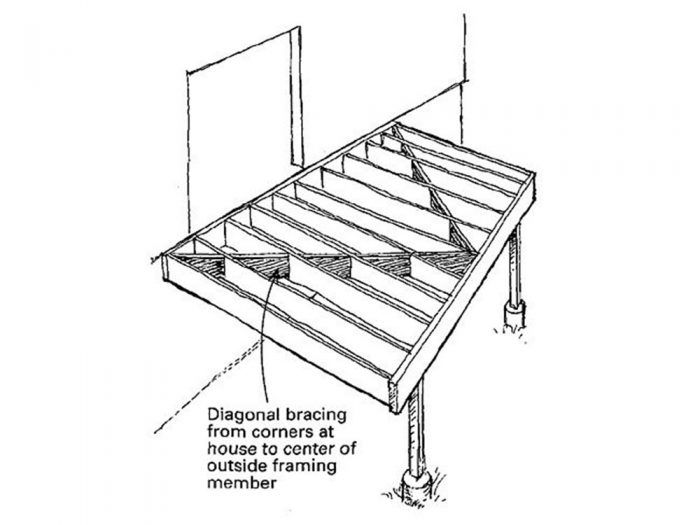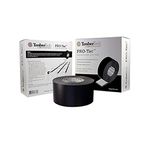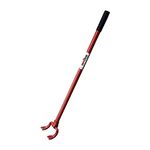
Many houses that I visit have decks that sway uncomfortably when walked on, especially when a portion of the deck is cantilevered. The drawing shows a method of stiffening a deck’s frame that I’ve used for 15 years with good results. The diagonals shown in the drawing are rows of solid blocking, the same depth as the joists. No deck I’ve built using this system has had the slightest wiggle. And the method works equally well for retrofits.
—Felix Marti, Ridgway, CO
Edited and illustrated by Charles Miller
From Fine Homebuilding #84
Fine Homebuilding Recommended Products
Fine Homebuilding receives a commission for items purchased through links on this site, including Amazon Associates and other affiliate advertising programs.

Flashing and Joist Tape

Angel Guard Deck Demon

Standard Marking Chalk






























View Comments
Just build the deck properly with substantial, bolted, post braces. (That's why there's a building code.)
Bracing is simply part of a deck, IMO. It needs to be there, just like in a wall. What is done above is fine and clean, but if looks are not an issue you get the same effect much more easily by running 1-by's diagonally. They are far easier, too. They will, naturally, collect water/dirt/bugs/bird nests, etc, so be prepared for that.
Rather than using angled blocking or diagonal 1x6s, I would opt for stainless steel cable (just below the joists) from top of post back to the house wall, forming an "X" under the deck. Very minimal issue with dirt & debris accumulating. Use turnbuckles at one end of each cable to add the means to tighten things up should it be needed.
AND, if you sequence properly, the X lets you square the framing before you deck it.
It’s code now in most states to add lateral control brackets that connect house joist to deck joists. Which go thru the ledger board into the basement or crawl space joist.
Running the decking diagonally or in a chevron can have a comparable effect without providing a resting spot for the leaves and birds. It does require 2 angled cuts on each deck board, but except where they die into the house, you can generally let them run wild and trim them all at once. If you're a good salesperson, you can charge a bit extra for the sophisticated design feature.